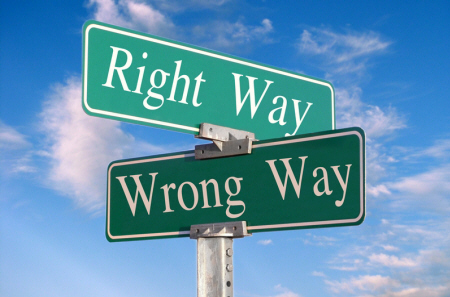The wrong — and right — way for brands to handle a mistake

Handling a mistake the right way or wrong way has an impact beyond the initial interaction. (Image credit: fitnessandweightlosscontrol.com)
It’s customer service story time again. This time we go out to a local restaurant that Maggie and I frequent. Saturday night we had dinner there with her parents to celebrate my birthday and their wedding anniversary. More importantly, it’s a burger place that sells old school beers in a can or new school ones with a glass. So yes, you can have a Schlitz, salad and sliders if you want. I know…awesome, right?
Speaking of sliders, Maggie and her mom ordered some to split. Her dad and I each got our own burger. I always get the out-and-in burger. They literally cook all the burger stuff inside the patty. Highly recommend. Anyway, Maggie ordered the short rib sliders, but they brought her the kobe beef ones by mistake.
Right way
Now here’s part of the “right way” to handle the mistake. The waitress apologized for the mixup and took the food back. She admitted she’d made the mistake because another table had ordered kobe sliders and she had it on her mind. Then after we had waited about 5-10 minutes and were getting impatient, she came back by, apologized it was taking so long and said she had told a manager, who would be right over to talk to us.
Wrong way
The manager she had talked to came by about five minutes later with the spare rib sliders. Maggie’s dad and I were already done eating…Maggie and her mom told us to eat; we aren’t that rude. We knew it was the manager our waitress had talked to because Maggie’s mom saw her talking to him.
Anyway he dropped the food off, said “spare rib sliders” as he put it down. And then walked away. Yep, you read that right. Walked away without even acknowledging the mistake. Can you say fail? Better yet, can you say: “Brand interaction with customer that creates a story that will define that restaurant’s perception to said customer and all the friends all four of them tell?” Of course you can’t, because no one talks like that. But you get my drift.
Right way
You know you work in PR when you take the time at the dinner table to discuss how the manager’s mistake will impact the restaurant’s brand via word of mouth. But I think it also makes you want to see companies succeed. Or maybe it was the waitress trying to do the right thing only to be squelched by her manager. Anyway, we gave them one more chance to see what would happen. Here’s how it went down.
As we were about to leave, I mentioned to the waitress that the manager who came over just dropped off our food and never said anything about the order mistake. She was apologetic and went and told a different manager, her general manager. He came over quickly and handled the situation exactly as it should have been handled the first time.
The GM said his server told him what happened and he apologized for the mixup. Then he told us he heard his manager came by an didn’t acknowledge what happened. He asked which manager it was, said they have a young staff and are working hard to improve, and gave us a $25 gift card for the next time we came in. We appreciated the gift card, and we’ll definitely use it. But what happened in that interaction with or without the gift card is something companies need to take note of.
Maggie and I go to this restaurant two to three times a month. So we spend a decent amount there. After the first manager’s failure to acknowledge the issue, we were actually talking about how maybe it was time to try somewhere new. We’d always had good experiences and would still come back from time to time. But this experience had been disappointing to say the least.
WOMMA says that if you’re able to turn a customer’s negative experience into a positive one, that customer will be 10 times more likely to advocate for your brand. I don’t know about 10 times, because we were already likely to advocate for this place. But when the GM came over, he changed the story of four people — two regulars — and probably saved his restaurant a decent amount of money a month. But more than that, he gave us a positive story to tell about his restaurant.
That’s the right way to handle a mistake.

 I'm a business communications consultant at Fleishman-Hillard. I used to call myself a PR professional, but I don't use that term anymore because people hear PR and they think only media relations.We do a lot more than that at Fleishman-Hillard Kansas City (FHKC). I specialize in social media, but am trying hard to brush up on my measurement and analytics. Every strategic consulting conversation should start with your business goals and how communications can help you reach them. My motto: "Your brand is what your customers say it is."
I'm a business communications consultant at Fleishman-Hillard. I used to call myself a PR professional, but I don't use that term anymore because people hear PR and they think only media relations.We do a lot more than that at Fleishman-Hillard Kansas City (FHKC). I specialize in social media, but am trying hard to brush up on my measurement and analytics. Every strategic consulting conversation should start with your business goals and how communications can help you reach them. My motto: "Your brand is what your customers say it is." 






